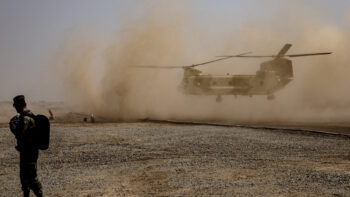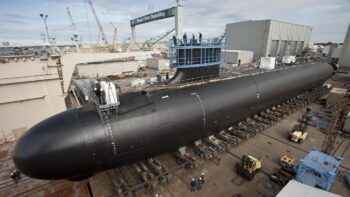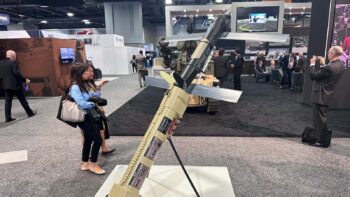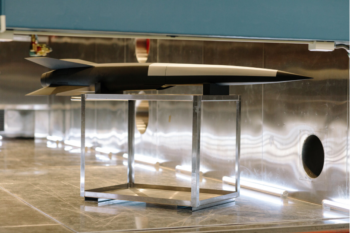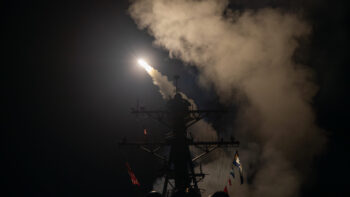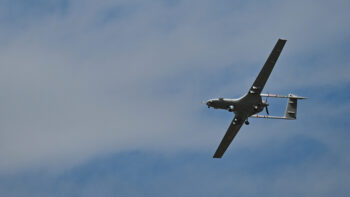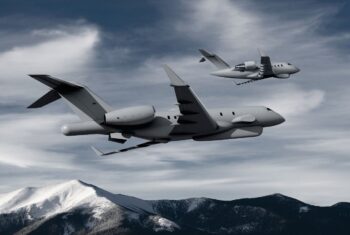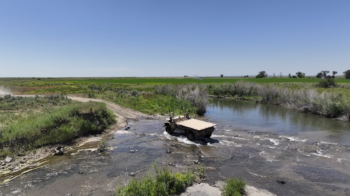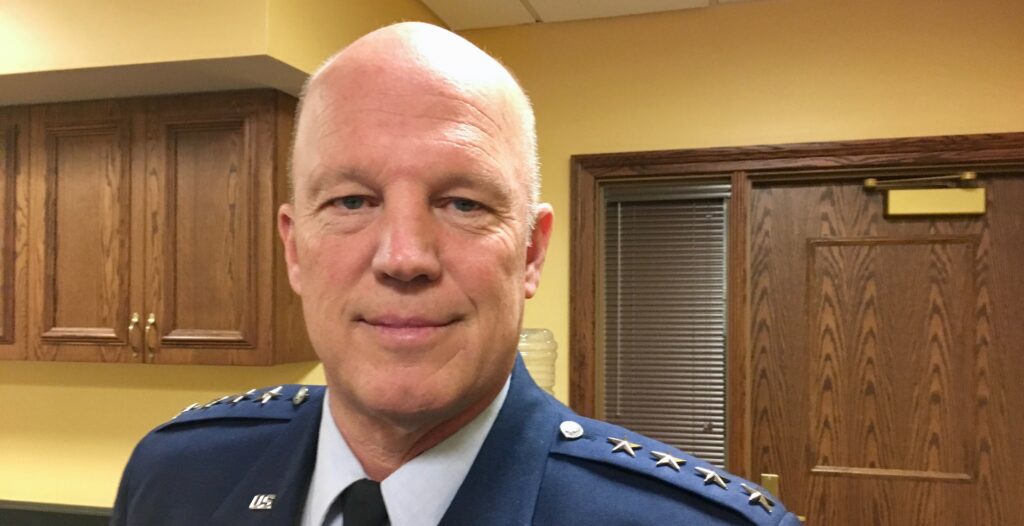
Gen. Jay Raymond, Commander, Space Command and head of Space Force
UPDATED. WASHINGTON: Gen. Jay Raymond said today the COVID-19 pandemic has had no affect on Space Command/Space Force readiness and US space capabilities, so far.
As proof, he rattled off a long list of Space Force achievements as its 100-day anniversary approaches, including yesterday’s successful launch of the final Advanced Extremely High Frequency satellite for classified military communications and the fact that Space Fence situational awareness radar is being declared operational today.
Raymond, who is double-hatted as commander of both Space Command and Space Force, told reporters this morning that only three cases of the virus have been confirmed among the space cadre, all in Colorado Springs.
The general stressed that he personally has done “scrubs” of all mission areas in order to ensure proper safety measures are in place to protect readiness at the five main space-related bases in the US, as well as at operations centers around the globe. The prevention measures include prescreening GPS mission crews for elevated temperatures, and ensuring that back-up crews are isolated prior to deployment.
Space operations in the US are concentrated at Peterson, Schriever and Buckley Air Force bases in Colorado; Patrick AFB at Cape Canaveral, Florida; and Vandenberg AFB in California. Raymond said these facilities will be redesignated as Space Force bases but said their renaming ceremonies have, understandably, been postponed.
As I’ve reported, all of those bases are now potentially back in the running as the new headquarters for Space Command, as well as the Army’s Redstone Arsenal in Alabama — and any other facility that wants to throw its hat in the ring — now that the Air Force has reopened the basing competition, originally begun in August.
In response to a reporter’s (perhaps tongue in cheek?) question, Raymond noted that the famous ‘Area 51’ — the highly-classified Groom Lake facility at the Nevada Test and Training Range at the locus of many conspiracy theories surrounding the existence of extraterrestrial beings — is not being designated as a Space Force base.

AEHF satellite for classified military communications
Yesterday’s AEHF launch, on a United Launch Alliance Atlas V rocket, completes the constellation, which provides highly-encrypted, radiation-hardened communications up to the strategic level — including ensuring that in the event of a nuclear attack, the president and top military commanders remain connected. AEHF also provides secure communications for international program partners Canada, the United Kingdom, Netherlands and Australia.
The Space Fence, located on Kwajalein Atoll in the Marshall Islands, is a solid-state S-band radar system that can track space objects smaller than 10cm in diameter (the size of a softball) primarily in Low Earth Orbit (LEO). It can also track satellites and debris up to Geosynchronous Orbit (GEO, 36,000 kilometers in altitude) but with less accuracy. Built by prime contractor Lockheed Martin, it is expected to significantly improve the capabilities of DoD’s current Space Surveillance Network (SSN) of radar and optical telescopes.
Vice Chairman of the Joint Chiefs of Staff Gen. John Hyten, at the time the head of Strategic Command, told Colin and I last April that he had visited the Space Fence site and came away impressed: “I’ve been out there and the data is eye watering. It’s better than we even thought it would be.” (As you can see in the nice mention of the interview in today’s press release by SMC.)
Space and Missile Systems Center (SMC) announced in December that the Space Fence had entered into a trial period that included successfully tracking the debris from India’s anti-satellite test last year.
UPDATE BEGINS. Raymond added that another important addition to the US SSN, the Space Surveillance Telescope (SST) now relocated to Australia, recently achieved its “first light” in its new home. The 3.5 meter SST, to be operated by Australia’s Royal Australian Air Force and the US Space Force’s 21st Space Wing, will provide space surveillance capability over the under-covered Southern Hemisphere.
The SST was originally developed by DARPA, which transferred it to the Air Force in 2016 at its White Sands Missile Range in New Mexico. Under a 2013 agreement, the telescope, the US and Australia agreed to re-locate the telescope to Harold E. Holt Naval Communications Station in Western Australia. UPDATE ENDS.
Raymond also the Space Force is “very close” to announcing the name for Space Force personnel, as well as the force’s insignia and uniforms. That was supposed to happen next week at this year’s late and lamented Space Symposium in Colorado Springs.
As for the new name for Space Force troops, Raymond said that the crowd-sourced search resulted in “over 700 responses” and that his staff is now “narrowing down the list.” Our opinion: Space Cadets, Space Marines and Space Troopers are NOT likely, no matter how cool they might be.
Morocco exempts defense firms from taxes, eyeing national and international investments
“Morocco seeks to boost its industry in several industrial parks while diversifying potential clients that had been steered away before because of taxation. Morocco seeks greater knowledge transfer and advanced weapons testing and production,” one expert said.


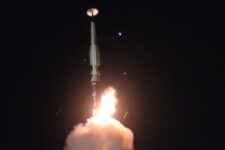


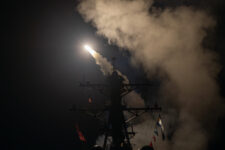
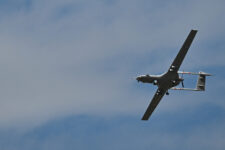
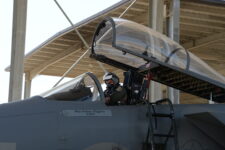
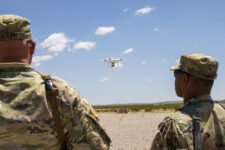
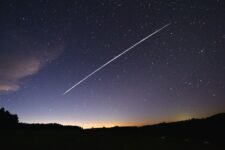
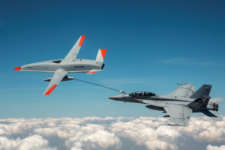





![E-2D_AR_1[1]](https://breakingdefense.com/wp-content/uploads/sites/3/2024/10/E-2D_AR_11-350x233.png)
